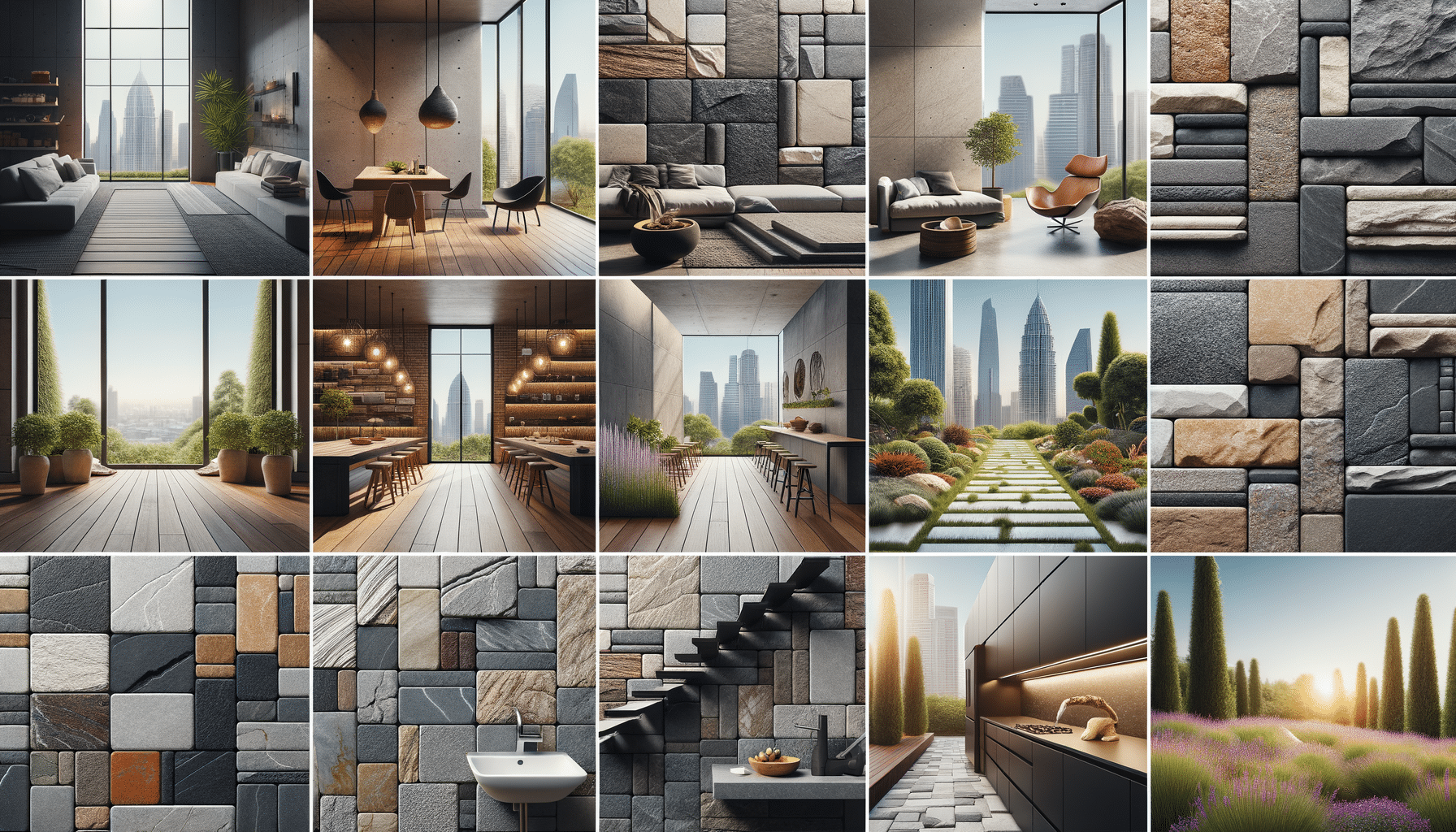Unveiling the Multi-Dimensional Appeal and Functionality of Stone Panels
Are you seeking to infuse your architectural design with a blend of classic sophistication and modern aesthetics? Stone panels could be your answer, offering a diverse and visually stunning option for both indoor and outdoor applications.

The Timeless Elegance of Stone Panels
Stone panels have long been revered for their timeless elegance, a quality that transcends fleeting design trends. Their natural beauty, derived from materials like marble, granite, and slate, offers a unique aesthetic that is both classic and contemporary. This versatility makes stone panels a favored choice for architects and designers aiming to create spaces that are both functional and visually appealing.
The charm of stone panels lies in their ability to adapt to various styles. Whether you are aiming for a rustic, traditional look or a sleek, modern finish, stone panels can provide the desired effect. They are often used in both interior and exterior applications, from feature walls and fireplaces to facades and garden paths. This adaptability is one reason why stone panels remain a popular choice in both residential and commercial projects.
Moreover, stone panels offer a distinct texture and color palette that man-made materials often struggle to replicate. Each piece of stone is unique, adding an element of individuality to any project. This natural variation in pattern and hue can enhance the depth and character of a space, creating an inviting and luxurious atmosphere.
Practical Benefits of Stone Panels
Beyond aesthetics, stone panels offer several practical benefits that make them a wise investment for any building project. One of the most significant advantages is their durability. Stone is a robust material that can withstand the test of time, resisting wear and tear better than many other materials. This longevity makes stone panels a cost-effective choice in the long run, as they require less frequent replacement or repair.
In addition to durability, stone panels provide excellent insulation properties. They can help regulate indoor temperatures, keeping spaces cooler in the summer and warmer in the winter. This thermal efficiency can lead to reduced energy costs, contributing to a building’s overall sustainability.
Stone panels are also relatively low maintenance. Unlike wood or metal, they do not require regular painting or sealing to maintain their appearance. A simple cleaning routine is often sufficient to keep stone panels looking their best. This ease of maintenance is particularly beneficial for large-scale projects or high-traffic areas.
Innovative Applications of Stone Panels
In recent years, the application of stone panels has expanded beyond traditional uses, thanks to advancements in technology and design. Architects and designers are finding innovative ways to incorporate stone panels into modern structures, enhancing both form and functionality.
One exciting development is the use of thin stone veneer panels, which offer the same aesthetic appeal as traditional stone but with reduced weight and thickness. This innovation allows for easier installation and greater flexibility in design, making it possible to use stone panels in areas that were previously impractical.
Stone panels are also being used in creative ways to enhance outdoor spaces. For example, they can be used to create stunning water features or as part of a sustainable landscape design. Their natural beauty and resilience to weather conditions make them an ideal choice for outdoor applications.
Furthermore, designers are exploring the use of stone panels in combination with other materials to create unique textures and contrasts. This approach can result in striking designs that highlight the natural beauty of stone while incorporating modern elements.
Environmental Considerations
As sustainability becomes an increasingly important factor in building design, the environmental impact of materials is a key consideration. Stone panels offer several eco-friendly benefits that make them an attractive choice for environmentally conscious projects.
First, stone is a natural material that is abundant and recyclable. It requires minimal processing compared to synthetic materials, resulting in a lower carbon footprint. Additionally, the longevity and durability of stone panels mean they do not need to be replaced as often, reducing waste over time.
Another environmental benefit is the thermal mass of stone, which can contribute to energy efficiency in buildings. By absorbing and slowly releasing heat, stone panels can help maintain a stable indoor climate, reducing the need for artificial heating and cooling.
However, it is important to consider the sourcing and transportation of stone, as these factors can impact the overall sustainability of a project. Opting for locally sourced stone can minimize transportation emissions and support local economies.
Conclusion: The Enduring Appeal of Stone Panels
In conclusion, stone panels offer a multifaceted charm and practicality that make them a valuable addition to any architectural project. Their timeless elegance, combined with practical benefits such as durability and low maintenance, ensures they remain a popular choice among designers and builders.
As innovations in design and technology continue to expand the possibilities for stone panels, their appeal is likely to grow even further. Whether used in traditional or contemporary settings, stone panels provide a unique and versatile solution that enhances both the aesthetic and functional aspects of a space.
For those seeking to create spaces that are both beautiful and sustainable, stone panels offer an exceptional option that stands the test of time. Their enduring appeal and practical benefits make them a wise choice for any project, large or small.